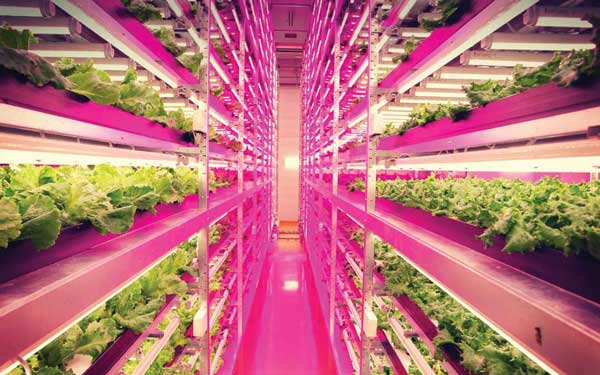Overcoming the Challenges of Feeding Global Megacities
IFTNEXT
More than half (54%) of the world’s population lives in urban areas, and that number is expected to climb to 66% or more than 6 billion people by 2050. In 1990, there were 10 megacities with 10 million people per metropolis. Today, there are more than 30 megacities. By 2050, about 50 megacities will be home to nearly 900 million people, many living in poverty and without adequate nutrition.
Conversely, rural populations—including farmers—will decline in the decades ahead. While further mechanization, automation, and new technology may improve the productivity of food crops and animals, the issues of water quality and scarcity, climate change, land use, and fewer rural dwellers will present greater challenges to food security and the food supply-demand system.
Given these challenges, how will we sustainably feed a growing urban population and especially those living in population-dense city environments?
The simple answer is to produce the food close to where the people are to minimize energy, transportation, greenhouse gases, and waste. But to accomplish this feat will take much ingenuity, advances in science & technology, and new thinking.
Perhaps the megacities of 2050 will showcase indoor farms and supermarkets that will be more akin to mini food processing plants that dispense bulk food and drink products without the waste of individual packaging. Or will the inherent waste of home kitchens give rise to a more centralized foodservice model with no food preparation in the home, thus eliminating the need for home refrigerators and cooking stoves and their energy requirements? Will most food in 2050 be shelf-stable and package- and preservative-free … and how will science and technology solve that conundrum?
Although those are certainly formidable questions and disruptive scenarios, we may already be on the path to meeting these challenges through initial forays into high-tech urban agriculture.
 Urban Food Production
Urban Food Production
While backyard gardens have been commonplace in large cities for decades, urban food production is expanding and evolving with rooftop gardens atop supermarkets, hydroponic greenhouses, indoor vertical farming, aeroponics, and aquaponics. Growing food where it’s consumed appeals to the “buy local” food movement. It also shortens the path from farm to table (i.e., food miles) and may offer economic development opportunities for poorer neighborhoods and communities.
New York City–based BrightFarms is one company at the forefront of urban food production. It operates hydroponic greenhouses in Rochelle, Ill., to serve Chicago, Culpeper County, Va., to serve Washington, DC, and Bucks County, Pa., to serve Philadelphia and New Jersey. The greenhouses—ranging in size from 56,000 to 160,000 square feet—produce baby greens, tomatoes, and herbs.
According to BrightFarms CEO Paul Lightfoot, the soil-less greenhouses are 90% more efficient in their water use than irrigated fields in California or Arizona. In addition, they use 80% less water, 90% less land, and 95% less fuel for shipping product than conventional agriculture. No pesticides are applied to the crops, and the greenhouses use ladybugs to control insects.
In Japan, Tokyo–based Mirai has constructed indoor vertical farms that use special LED lighting that emits wavelengths most conducive to plant growth. A 2,300-square-meter farm in Tagajo, Japan, produces 10,000 heads of lettuce per day, which mature 2.5 times faster than conventionally grown lettuce. The yield per square meter is 50 to 100 times greater than a conventional farm. Furthermore, the indoor-grown lettuce contains 10 times higher levels of beta carotene and greater amounts of vitamin C, consumes 1% of the water, and occupies about 2% of the land as its outdoor counterpart.
Although LED lighting is energy efficient, the energy required to grow the indoor produce is costlier than essentially free solar energy. However, the energy associated with transporting vertically farmed product is less than traditional lettuce. The indoor vertical farm also has the advantage of being located anywhere within a large metro area; you can’t carve out acres of land for conventional farming in a densely populated urban environment. And the computer-controlled indoor farm negates the effects of adverse and unpredictable weather conditions.
Made possible through the generous support of Ingredion Incorporated, IFT’s Platinum Innovation Sponsor, IFTNEXT is a heightened, purpose-drive commitment to bringing provocative ideas and discoveries together to inspire thoughtful, important conversations that challenge conventional approaches with the goal of informing global issues related to the science of food.
